Introduction
Back control is an essential position to master in Brazilian Jiu Jitsu (BJJ). Back control applies the principles of leverage and weight distribution to maintain maximum control over an opponent. The back has the added benefit of being able to attack your opponent, without him being able to effectively attack you.
In this article, I will discuss a comprehensive approach to getting to the back, including the fundamentals of back control, the mechanics of effective back control, and common back control mistakes to avoid. I have been training for several years now, and I have had my back taken hundreds of times. The feeling of a skilled Jiu JItsu practitioner on your back is intimidating. For all of us on top or bottom, it is important to gain knowledge of the back, in order to employ it effectively to secure a victory
The Different Types of Back Control
Back control is an important position in Brazilian Jiu-Jitsu (BJJ) and can be used to dominate an opponent and force them to submit. In this section, I will provide a brief overview of two common types of back control: rear mount what I call the “king of control”) and the seatbelt grip.
Rear Mount - The King Of Back Control
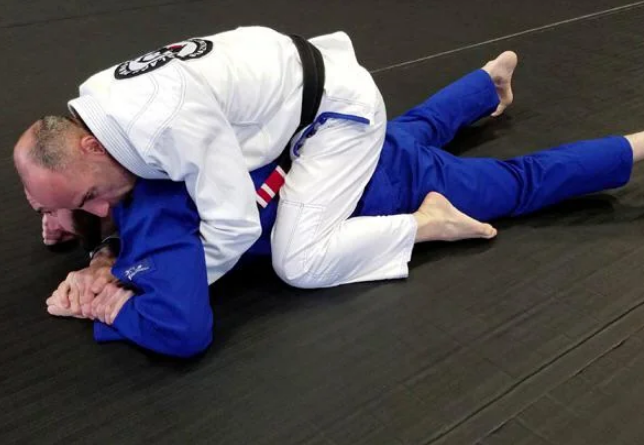
Rear mount, what I referred to as the “king of control,” is a strong back control position in BJJ that can be used to take an opponent’s back and establish a dominant position. To achieve rear mount, first, you must catch them as they are turning away from you, which often happens in side control. As they start to turn away from you, put your hooks in and secure a double unders grip on their wrist. Pull their wrists underneath them, and drive your hips into the ground. You now have maximum control over your opponent.
From here you have all parameters of control established. You control your opponents hips and shoulders. You have maximum mobility while your opponent has none. You have the ability to strike vital areas while your opponent has none. In addition, you have the help of gravity, which your opponent must suffer without much recourse.
Simply put, this is the most effective position to be in no matter what your objective is. From here you can easily deal damage, choke, or disengage from a fight if you so choose.
How to Get there:
Traditional Double Unders
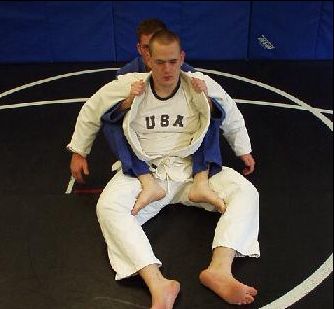
Overview
When it comes to back control, the Double Unders position is a popular choice and considered to be a very effective technique, especially in the gi. This position involves the attacker having both of their arms encircling the opponent’s upper torso, while the attacker’s legs are between the opponent’s legs to trap them and secure hip control. Placing the head and chin into the opponent’s shoulder can further help the attacker to keep their chest tight against the opponent and achieve the best possible back control. It looks like this:
Benefits of the Traditional Under Unders
Although this position offers less offensive capabilities, the control that is available is fantastic. From a self defense stand point, this position is also non threatening to passers by, as many people may mistake a seatbelt grip for a choke, which could land you in legal trouble in the wrong circumstances.
The Seatbelt Grip
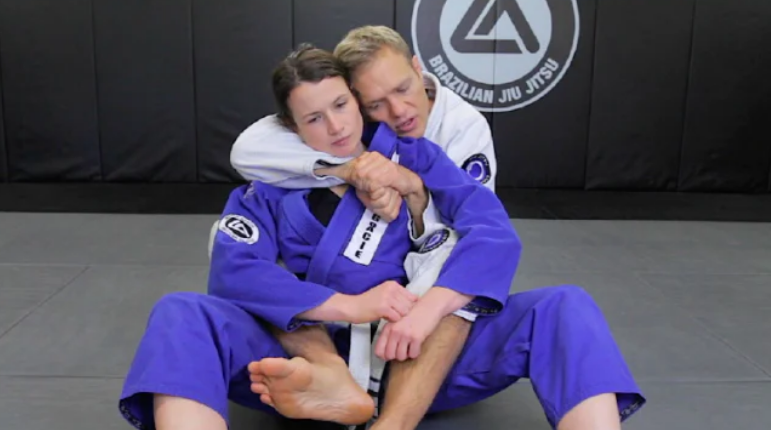
Overview
The seatbelt grip is a popular back control position used in Brazilian Jiu Jitsu, and is an ideal option for grapplers who are looking to control and dominate their opponents. This position requires the attacker to wrap their arms around the opponent’s midsection (one arm over the shoulder, one arm under) while trapping their hips with their legs to establish a secure position.
Benefits of the Seatbelt Grip
This is by far the most common grip on the back. It offers high quality control over the hips and shoulders, as well as provides an easy opportunity to attack the neck, arms or even legs of the opponent. For this reason, most people choose the seatbelt grip.
Some Basic Submissions from the Back
The Rear Naked Choke
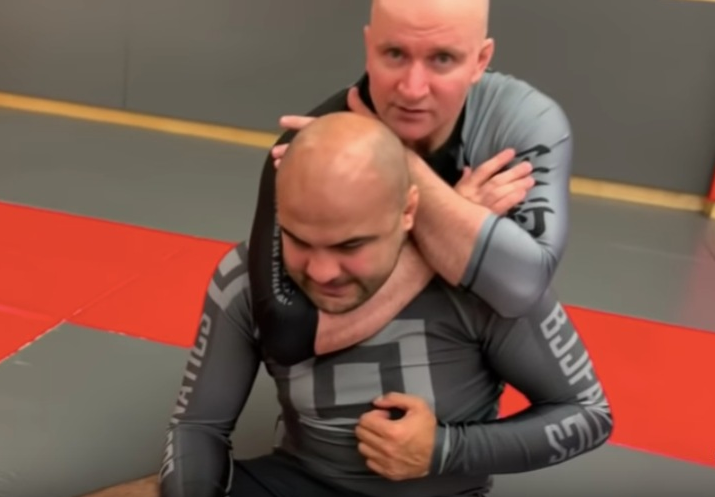
Technical Overview
The Rear Naked Choke is an effective submission used in Jiu Jitsu, and other martial arts. It is an essential technique that all BJJ practitioners should familiarize themselves with and master. The basic mechanics of the Rear Naked Choke involve wrapping one arm around the opponent’s neck and applying pressure by squeezing the arm and using the forearm to apply direct pressure to the carotid arteries, causing your opponent to either submit, or go unconscious. If the submission is held long after the opponent is unconscious, the restriction of blood flow can cause brain damage, or even death.
Benefits of the Rear Naked Choke
The reason the Rear Naked Choke is so effective is that it does not require the use of strength to work. It can be applied by weaker practitioners against stronger opponents, and if enough pressure is created, they will go unconscious. Furthermore, since the opponent’s body is relatively contained in this position, the counterattacks available to them are limited, escape is their only option. For this reason, the RNC is the most widely used submission across No Gi Grappling and MMA, and will continue to be well into the future.
Bow And Arrow Choke
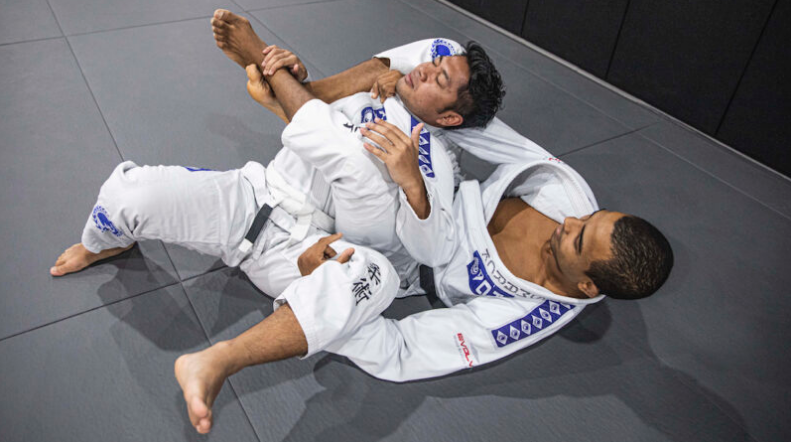
In this section, I will be discussing the bow and arrow choke from the back control position in Brazilian Jiu-Jitsu. This is an effective submission technique that can be used in a variety of scenarios when you find yourself in your opponent’s back. In order to properly execute this choke, there are a few key points that you should be aware of.
Technical Overview
The bow and arrow choke is primarily used when attacking your opponent’s back. First, establish a firm grip with your choking hand on your opponent’s collar. Grab the fabric around your opponent’s knee, and fall to the side. Keep your elbow tight, and put your leg around their shoulder, and begin to apply pressure by pulling back on both arms.
The attacker has a tremendous amount of pressure in this position, and can easily secure the submission.
Benefits of the Bow and Arrow Choke
The bow and arrow choke is one of the most powerful submissions from the back control position. Once the grips are secured, the bow and arrow is notoriously difficult to escape. The amount of leverage the attacker has is tremendous, and unless the bottom player has set up defenses before grips were established, the game is up.
A Few Techniques for Taking The Back
In this section, I will be detailing a few techniques everyone should know that will effectively get you to the back.
The Chair Sit
The chair sit is a technique used to transition from the technical mount to the back position. It is often referred to as the “lazy man’s back take” and is an excellent way to protect yourself while taking the back.
For our purposes, assume we have passed the guard to the right, and our opponent has turned away from us, and in the process we secured the technical mount. To execute the chair sit, there are two paths, both begin with a seatbelt grip.
Path 1, if you want to be fancy: swivel your right leg out, so your shin is parallel to their spine. Then, sit down and fall to your left ear. Once your shoulders hit the mat, you should be in a fantastic position on your opponent’s back.
Path 2, Sit back, pulling your opponent on top of you. Congratulations, you are now attacking your opponent’s back.
Benefits of the Chair Sit
The primary benefit of the chair sit is probably the easiest way to take the back, especially if you choose option 2. It takes very little strength or finesse to execute, and in the end you wind up in a good position to attack. The only draw back of option 2 is that it may require some strength, but not a tremendous amount. So be aware if you are not strong enough to hold your opponent tight while executing the move, you may fail.
The Renzo Roll
The Renzo Roll is a great way to take the back, but does take some practice to master. Start on your opponent’s back, in the turtle position. Secure a seatbelt grip, and roll over the top of your opponent, so that you are lying flat on your back, with your spine parallel to his. Once there, you can apply pressure to the back of your opponent’s head, forcing them to roll forwards, at which point you can take the back.
Benefits of the Renzo Roll
With enough practice, anyone can do this to anyone. Size truely does not matter on this one, since you are not flipping your opponent, they flip themselves. It is the pressure compliance from pushing down on their head that gets them to roll. Secondly, when executed correctly, you wind up in a perfect position to attack the back.
Summary and Final Thoughts
We have provided an in-depth overview of back control in this article, covering the key elements of the position, and the techniques used to achieve it, as well as the importance of proper body positioning. As the pinnacle of offensive Jiu Jitsu, it is paramount that you as a practitioner understand the position, and master it’s attacks. Once you have your opponent’s back – they will tap. This must be the goal of your practice.
If you are not integrating, attacking the back into your BJJ strategy, you are missing the boat. Having a solid attack system will make you a better competitor, and a force to be reckoned with. With a better understanding of how to control the back, you will find yourself more prepared and confident whenever you step onto the mats.